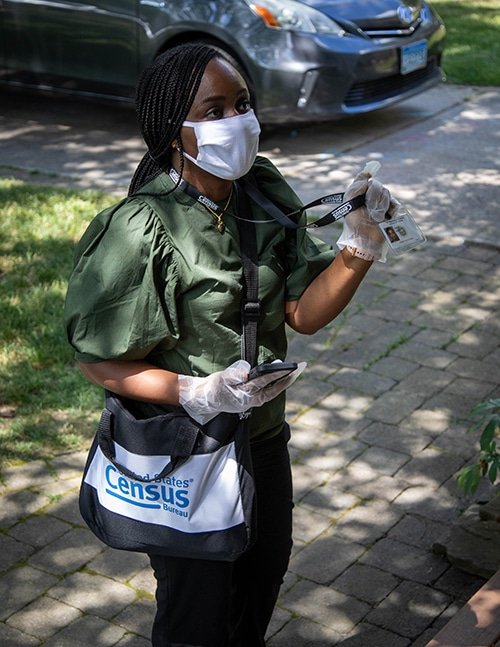By D. Kevin McNeir, New Jersey Urban News
——
With the Labor Day weekend over and U.S. schools back in session – the majority adopting a virtual learning model due to COVID-19 – the nation’s attention turns to the 2020 Census and the quickly-approaching Sept. 30th deadline.
While the national response rate stands at 65.4%, five states lead the way: Idaho, 98.1%; West Virginia, 96.7%; Washington, 95.3%; Kansas, 94.6%; and Hawaii, 94.4%.
As for the Garden State, New Jersey stands in the middle of the pack at 67.6% The good news: there’s still time to respond either online, by phone or by mail. And Census takers are still knocking on doors, practicing pandemic protocol to prevent the spread of coronavirus, in efforts to reach those living in “hard-to-count” [HTC] areas who still have not responded to the Census.
In New Jersey, 22% of the state’s residents live in HTC areas – the same communities that often have the highest poverty rates and remain most in need of the essential services that are provided based on the Census count.
According to the New Jersey Institute for Social Justice, 668,636 Blacks live in HTC areas where a low percentage of residents have completed and returned the recent Census questionnaire. The number represents 51% — over half – of the total Black population in the State with New Jersey eighth in the nation for its numbers of African Americans living in HTC areas.
But does it really matter if Blacks living in HTC areas are left out of the Census 2020 count? Consider that those who reside in hard to count communities often include: people of color, children under five; low-income, foreign born residents, below the poverty line, low educational attainment and sing-parent headed households. For them, their futures may well rest on the Census count and them being included in reported totals.
For example, consider the fact that Newark, whose response rate as of Aug. 30 was 53.4%, bears the unfortunate distinction as the #1 city in the U.S. by percentage of Blacks living in HTC areas. Children under five, one of the often-cited characteristics of those living in HTC areas, stands at 96%.
Other New Jersey cities, as of Aug. 30, with large Black populations who have disturbingly-low response rates include: Atlantic City, 42.2%; Camden, 53.8%; Newark, 53.4%; Paterson, 32.8%; and Trenton, 27.93%.
Census results shape the future of communities, as Census data informs how billions of dollars in federal funds are distributed for health clinics, school lunch programs, disaster recovery initiatives and other critical programs and services for the next 10 years.
In late August, the U.S. Census Bureau released their final mailing to nonresponding households which should arrive by Sept. 15. The mailing represents the last in a series of reminders the Census Bureau has mailed to nonresponding households since mid-March urging them to respond.
Over 84.1% of housing units have been counted in the 2020 Census as of Sept. 1, with 19.0% counted by Census takers and other field data collection operations and 65.1% of housing units responding online, by phone or by mail.
The Census Bureau strongly encourages households that have not yet responded to the Census to complete their questionnaire by Sept. 30 online at 2020census.gov or by phone in English or 12 other languages.
Households do not need their mailed materials to respond. Households that receive this mailing and want to respond using the enclosed paper questionnaire must return it as soon as possible. And of course, households that have already responded should disregard the mailing.
The Census Bureau will process all paper questionnaires postmarked by Sept. 30 and received at the Paper Data Capture facilities no later than October 7.
The U.S. Constitution mandates a Census of the population every 10 years. The goal of the 2020 Census is to count everyone who lives in the U.S. on April 1, 2020 (Census Day).
Census statistics are used to determine the number of seats each state holds in the U.S. House of Representatives and inform how billions of dollars in federal funds will be allocated by state, local and federal lawmakers annually for the next 10 years.
Remember, there’s still time to be counted!
This story was part of the 2020 Census: New Jersey Media Counts program, an initiative of the Center for Cooperative Media at Montclair State University.

